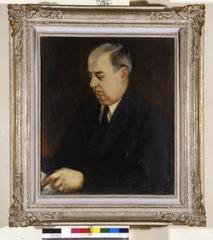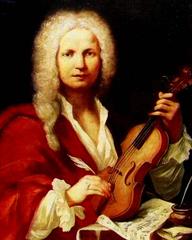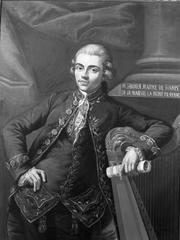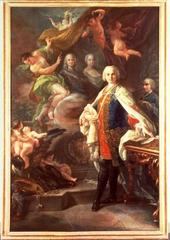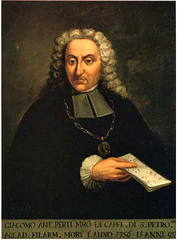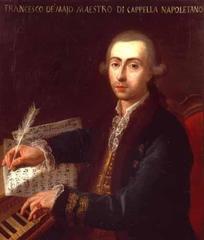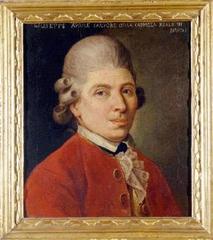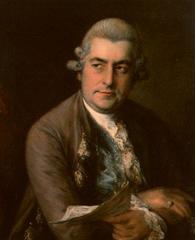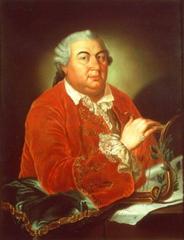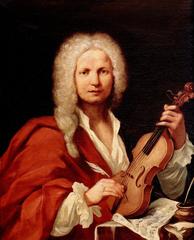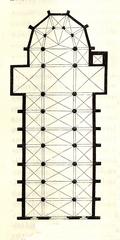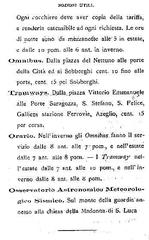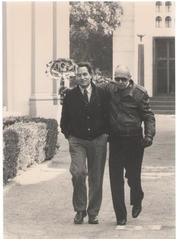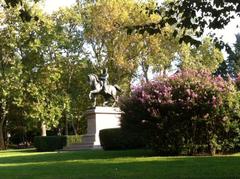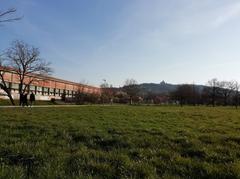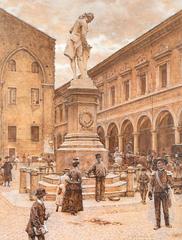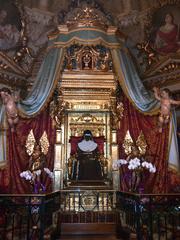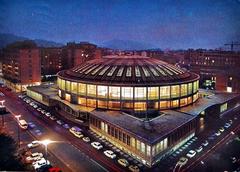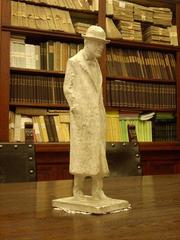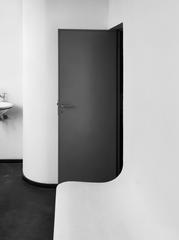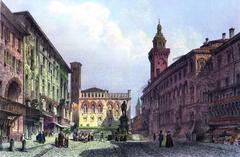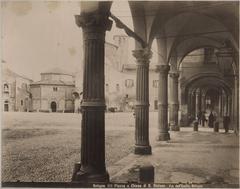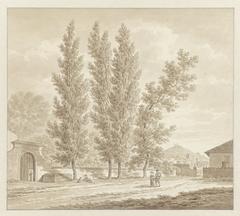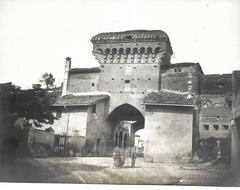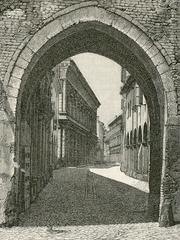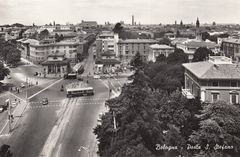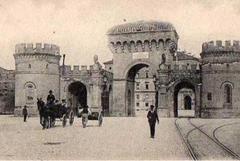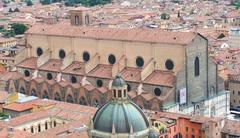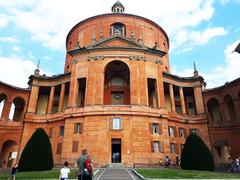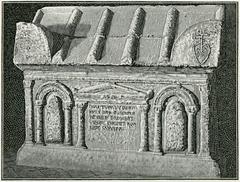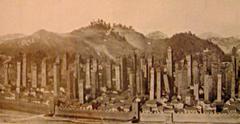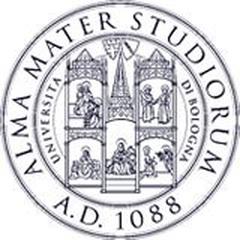
Visiting Museo Internazionale e Biblioteca della Musica: Hours, Tickets, and Tips
Date: 22/07/2024
Introduction
The Museo internazionale e biblioteca della musica in Bologna, Italy, stands as a beacon of the city’s rich musical heritage. Nestled within the historic Palazzo Sanguinetti, this museum offers an unparalleled glimpse into the evolution of Western classical music and Bologna’s influential role in this history. Established to preserve and celebrate the city’s musical legacy, the museum presents an extensive collection of over 100,000 items, including rare manuscripts, historical instruments, and significant musical documents. Bologna, known for its vibrant cultural scene, has been a hub for musical innovation since the medieval period, further exemplified by the founding of the Accademia Filarmonica di Bologna in 1666. This guide provides comprehensive insights into the museum’s history, visiting hours, ticket prices, and more, making it an essential resource for anyone planning a visit. Whether you’re an avid music enthusiast or a curious traveler, the Museo internazionale e biblioteca della musica promises an enriching experience (Museo della Musica).
Table of Contents
- Introduction
- History of Museo internazionale e biblioteca della musica, Bologna
- Collection and Exhibits
- The Palazzo Sanguinetti
- Restoration and Modernization
- Visiting Information
- Nearby Attractions
- Educational and Cultural Impact
- Notable Exhibitions and Events
- Conclusion
History of Museo internazionale e biblioteca della musica, Bologna
Origins and Establishment
The Museo internazionale e biblioteca della musica, located in the historic Palazzo Sanguinetti in Bologna, is a testament to the city’s rich musical heritage. The museum’s origins can be traced back to the early 19th century when Bologna was a prominent center for music and culture. The Palazzo Sanguinetti itself, an architectural gem, was constructed in the late 16th century and has undergone several renovations over the centuries, reflecting various architectural styles from Renaissance to Neoclassical (Museo della Musica).
The Role of Bologna in Music History
Bologna has long been a hub for musical innovation and education. The city’s association with music dates back to the medieval period when it was home to one of the earliest music schools in Europe, the Accademia Filarmonica di Bologna, founded in 1666. This institution played a crucial role in the development of Western classical music, attracting composers and musicians from across Europe. The museum’s collection includes numerous artifacts and documents related to the Accademia Filarmonica, highlighting its significance in the history of music education (Accademia Filarmonica di Bologna).
Collection and Exhibits
Historical Instruments
The museum’s collection is vast and diverse, encompassing over 100,000 items, including musical instruments, manuscripts, scores, and historical documents. One of the most notable aspects of the collection is its focus on the works of prominent composers who had connections to Bologna, such as Wolfgang Amadeus Mozart, Gioachino Rossini, and Giuseppe Verdi. The museum houses original manuscripts and letters from these composers, providing invaluable insights into their creative processes and personal lives (Museo della Musica Collection).
Manuscripts and Scores
The Museo internazionale e biblioteca della musica in Bologna showcases an impressive collection of historical musical instruments, reflecting the evolution of music-making over the centuries. The collection includes rare and valuable instruments from the 16th to the 19th centuries, highlighting the craftsmanship and technological advancements of different eras. Notable pieces include a 17th-century harpsichord by Giovanni Battista Giusti and a 16th-century viola da gamba by Gasparo da Salò. These instruments are not only significant for their historical value but also for their role in the development of Western music.
Portraits and Iconography
The museum’s collection of portraits and iconography offers a visual history of music and its practitioners. The portraits include depictions of famous composers, performers, and patrons, painted by renowned artists of their time. For example, the museum houses a portrait of Farinelli, the celebrated castrato singer, painted by Corrado Giaquinto. These artworks not only celebrate the individuals who shaped the history of music but also provide context for understanding the cultural and social environments in which they lived and worked.
Music Books and Treatises
The library section of the museum boasts an extensive collection of music books and treatises, essential resources for musicologists and researchers. These texts cover a wide range of topics, from music theory and composition to performance practice and instrument construction. Notable works include treatises by Johann Joseph Fux and Jean-Philippe Rameau, which have had a profound influence on the study and teaching of music. The collection also includes rare first editions and annotated copies, offering unique insights into the historical development of musical thought.
The Palazzo Sanguinetti
The Palazzo Sanguinetti, the museum’s home, is itself a historical artifact. The building’s architecture and interior design reflect the artistic and cultural trends of different periods. The frescoes and decorations in the palazzo are masterpieces of Bolognese art, created by renowned artists such as Antonio Basoli and Pelagio Palagi. These artworks not only enhance the aesthetic appeal of the museum but also provide a historical context for the exhibits (Palazzo Sanguinetti).
Restoration and Modernization
In the late 20th and early 21st centuries, the Palazzo Sanguinetti underwent extensive restoration to preserve its historical integrity and adapt it for modern use as a museum. The restoration project, completed in 2004, was a collaborative effort involving historians, architects, and conservators. The project aimed to restore the palazzo’s original features while incorporating modern amenities to enhance the visitor experience. The museum now features state-of-the-art exhibition spaces, interactive displays, and multimedia installations, making it accessible and engaging for a contemporary audience (Restoration of Palazzo Sanguinetti).
Visiting Information
Visiting Hours
The Museo internazionale e biblioteca della musica is open to the public from Tuesday to Sunday, typically from 10:00 AM to 6:00 PM. It is advisable to check the official website for any changes in opening hours or special closures (Museo Visiting Hours).
Ticket Prices
Ticket prices for the museum are very reasonable, with various options available. General admission tickets are priced at €6, while reduced tickets for students and seniors are €4. Children under the age of 6 and individuals with disabilities can enter for free. Special group rates and guided tours are also available (Museo Tickets).
Accessibility
The museum is committed to being accessible to all visitors. There are facilities and services available for individuals with disabilities, including ramps and elevators. It is recommended to contact the museum in advance to make any specific arrangements (Accessibility Information).
Nearby Attractions
Bologna is a city rich in historical sites and cultural attractions. Nearby the Museo internazionale e biblioteca della musica, visitors can explore other significant landmarks such as the Two Towers (Le Due Torri), Piazza Maggiore, and the Basilica di San Petronio. These nearby attractions make it easy for visitors to plan a comprehensive day of sightseeing in Bologna.
Educational and Cultural Impact
The Museo internazionale e biblioteca della musica plays a vital role in promoting music education and cultural heritage. The museum offers a range of educational programs, workshops, and concerts aimed at diverse audiences, from school children to professional musicians. These initiatives help to foster a deeper appreciation of music and its history, ensuring that Bologna’s rich musical legacy continues to inspire future generations (Educational Programs).
Notable Exhibitions and Events
The Museo internazionale e biblioteca della musica regularly hosts temporary exhibitions and events that explore specific themes or highlight particular aspects of its collections. These exhibitions often feature collaborations with other institutions and scholars, bringing fresh perspectives and new research to the public. Recent exhibitions have included a focus on the music of the Baroque period, the role of women in music history, and the influence of Italian opera on European culture. These temporary exhibitions provide dynamic and engaging experiences for visitors, encouraging them to return and discover new facets of the museum’s collections.
Conclusion
In conclusion, the Museo internazionale e biblioteca della musica in Bologna offers a profound journey through the annals of music history. Its meticulously curated collections, housed in the architecturally significant Palazzo Sanguinetti, provide visitors with a unique opportunity to explore the works and lives of some of the most renowned composers in Western music. The museum’s commitment to accessibility, education, and cultural preservation ensures that visitors of all ages and backgrounds can appreciate its offerings. From interactive displays to rare manuscripts, the museum is a treasure trove for anyone seeking to delve into the rich tapestry of Bologna’s musical legacy. As Bologna continues to be recognized as a UNESCO City of Music, the Museo internazionale e biblioteca della musica remains a vital institution, inspiring future generations and fostering a deeper understanding of music’s historical and cultural impact (Museo della Musica Collection).
References
- Museo della Musica, 2024, Museo internazionale e biblioteca della musica Museo della Musica
- Accademia Filarmonica di Bologna, 2024, Accademia Filarmonica di Bologna Accademia Filarmonica di Bologna
